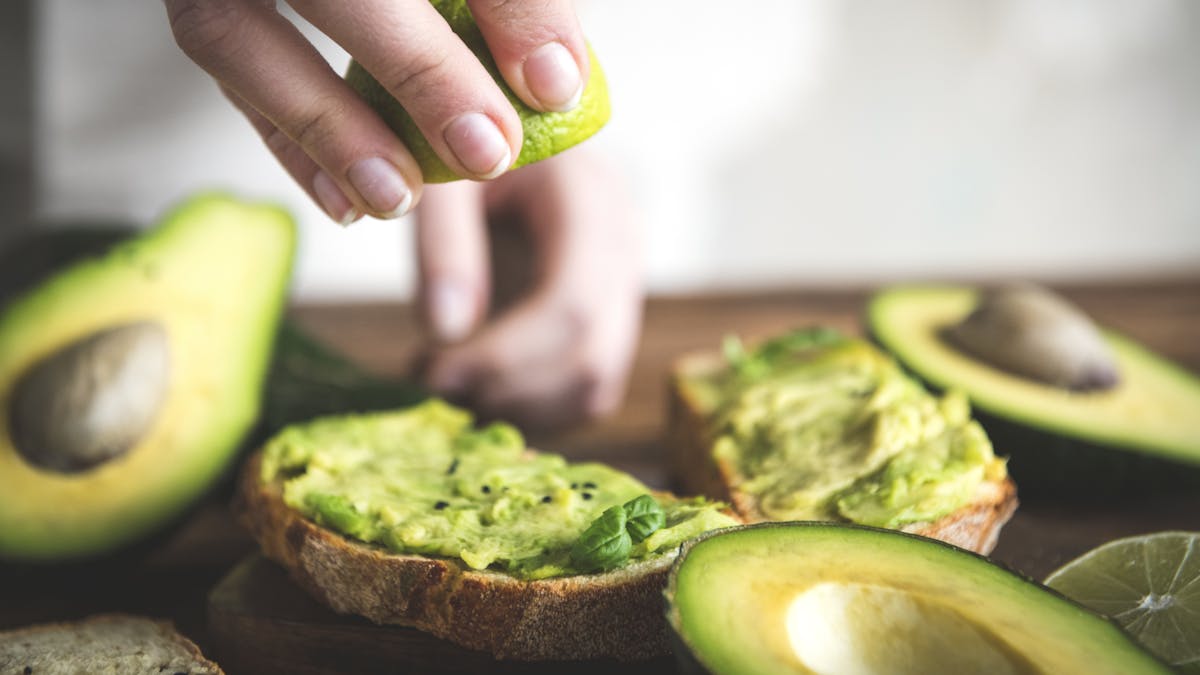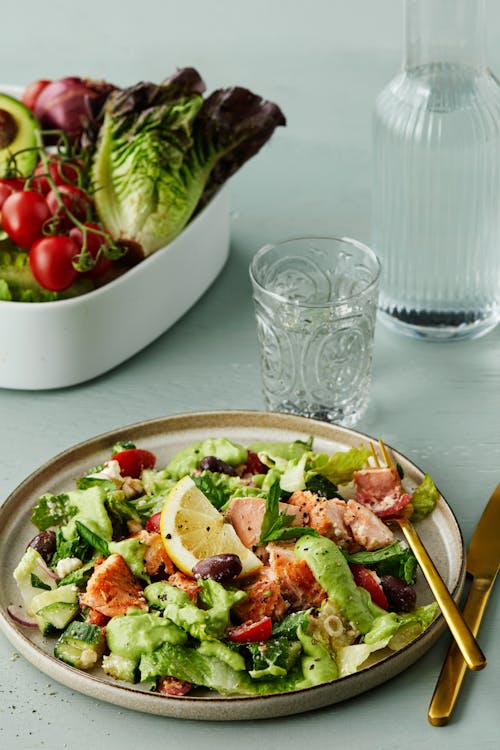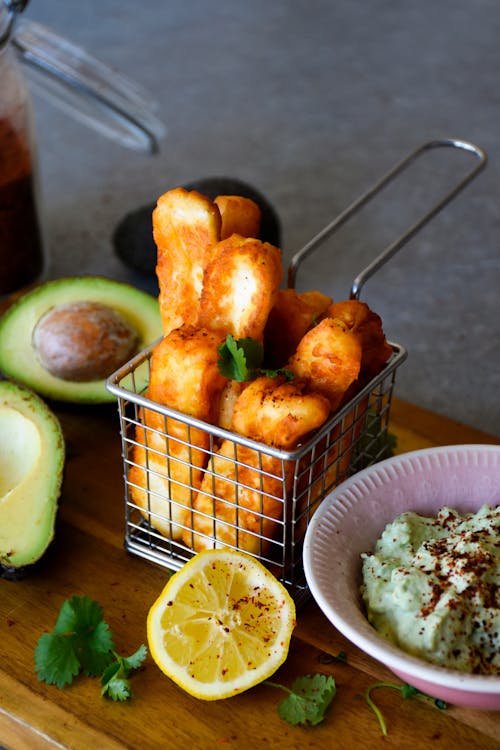Top 7 nutrition facts and health benefits of avocado
Rich taste, creamy texture, and undeniably filling — these are just a few reasons why avocados are incredibly popular. What’s more, they are nutritious, versatile, and may even help you lose weight.
Read on to learn everything you want to know about avocados, including the best ways to enjoy them.
1. Is avocado a fruit or a vegetable?
Avocados are usually grouped with vegetables because they aren’t sweet and are typically used in salads, guacamole, and savory dishes.
However, the avocado is technically a fruit that grows on the Persea americana tree that is native to Mexico and Central America.1 Today, avocados are also grown in several other regions, including the US.
Avocados are high in fat — another feature that’s uncommon in fruits, with the exception of olives and coconut. In fact, in addition to being nicknamed “alligator pear” for their dark, leathery skin, avocados are sometimes called “butter pear” due to the creamy texture and rich taste of the fruit inside.
Yet they do have some features in common with other fruits. Like mangos, peaches, and dates, avocados contain one large seed or pit in their center.
2. Avocados are rich in nutrients
Avocados have an impressive nutrition profile. A 100-gram (3.5-ounce) portion (half a large avocado) provides:2
- 15 grams of natural fat
- 2 grams of protein
- 9 grams of total carbohydrates, including 7 grams from fiber
- 160 calories
- 485 mg of potassium, or 14% of the recommended daily intake (RDI). This is more than you’d get from a medium banana — and with a lot less sugar.
- Avocados are also a good source of vitamin C, folate, vitamin B6, pantothenic acid (vitamin B5), vitamin E, and magnesium.
In addition, they contain phytochemicals (“plant chemicals”) which may potentially provide health benefits, based on observational, test tube and animal studies. However, more research is needed to confirm their effects in humans.3
3. Potential health benefits of avocados
Avocado consumption has been linked to several positive health changes:
- Improved lipid profile: One systematic review of randomized controlled trials (RCTs) — considered the strongest level of scientific evidence — found that eating avocados lowered people’s LDL cholesterol and triglyceride levels and raised their HDL levels.4 However, some of these changes may not occur in everyone who increases their avocado intake.5
- Decreased oxidation of LDL: In a recent trial, people with elevated LDL cholesterol who consumed one avocado daily for five weeks achieved a significant decrease in oxidized (damaged) small, dense LDL particles — the type considered to have the strongest link to heart disease.6
- Better absorption of fat-soluble vitamins: In one study, when healthy adults ate avocado with a meal containing tomato sauce or carrots, they absorbed more beta-carotene (a precursor to vitamin A found in plants) and converted 4 to 12 times more of that beta-carotene to vitamin A, compared to eating identical meals without avocado.78 This effect is particularly beneficial for vegans and some vegetarians, because vitamin A is only found in animal sources like fatty fish, organ meats, and dairy. Therefore, they depend more on the natural conversion of beta carotene to vitamin A.
4. Avocados are high in fiber
Avocados provide an excellent source of soluble and insoluble fiber.9 In fact, they’re at the top of our list of 15 high-fiber foods.
In systematic reviews of randomized trials, fiber has been found to help lower blood sugar and LDL cholesterol.10 It can also be helpful for reducing constipation and improving symptoms of irritable bowel syndrome (IBS).11
Adding a large avocado to a meal — or dividing it among two meals — is an easy and delicious way to get an impressive 14 grams of fiber.
5. Avocados are low in carbs
A growing number of high-quality studies demonstrate that low-carb diets can help people lose weight and achieve better type 2 diabetes control.12
If you’re cutting back on carbs, eating avocado can help you stay within your daily carb budget.
A 100-gram serving (about half a large avocado) contains 9 grams of total carbohydrates. However, 7 of those carbs are fiber, which your body’s digestive tract can’t digest and absorb.13
Therefore, half an avocado contains only 2 grams of net carbs, also known as digestible carbs.14 This makes avocado an ideal food to enjoy regularly on a low-carb or keto diet.
6. How many calories does an avocado have?
An avocado contains about 250-320 calories, depending on its size. Although avocados are considered fairly high in calories, they’re also very filling due to being high in both fat and fiber.15
Unlike some other foods, avocados are pretty hard to overeat (unless it is guacamole with chips.) What’s more, their calories come with important nutrients.
At Diet Doctor, we don’t recommend counting calories to achieve and maintain a healthy weight. Instead, we advise you to make your calories count by choosing nutritious, satisfying foods — like avocado.
7. Avocados may be helpful for weight loss
Avocados have a reputation for being fattening. Yet results from studies don’t support this idea.16 In fact, research suggests that eating avocado may help rather than hinder weight loss by making you feel full.
A 2013 trial showed that adding avocado to a meal helped participants feel full for several hours.17
Recent similar crossover trials have found that, because of its combo of fat and fiber, including avocado at a meal triggers greater release of “fullness” hormones like PYY and GLP-1 that play a strong role in making people feel satisfied.18
Of course, the rest of your diet will have a large influence on your weight. Adding avocado slices to a burger and fries or eating guacamole with chips likely won’t help you lose weight. But including avocado as part of a healthy diet might be a good strategy for successful weight loss.
How to choose a ripe avocado
When selecting an avocado, first look at the color. Avocados that are darker green are riper than those with lighter, brighter green skin. However, if they appear nearly black, they may be overly ripe.
Although color can give you a clue about an avocado’s ripeness, checking its firmness is the only way to know for sure.
Pick up a medium-dark avocado, hold it in the palm of your hand, and gently press it with your thumb. Its ripeness will be reflected in how it feels:
- Unripe: If the avocado feels hard and does not yield to your thumb’s pressure, it isn’t ripe yet. It will ripen in anywhere from 2-5 days, depending on the temperature and humidity in your home.
- Nearly ripe: An avocado that’s almost ripe is slightly soft but does not yet yield to pressure. It will ripen in 1 to 2 days.
- Ripe: If the avocado yields to gentle pressure with your thumb and feels soft but not mushy, it is ripe and ready to eat that day. Refrigerating it once you’re home can extend its shelf life for a day or so.
- Overripe: An avocado that is past its peak feels extremely soft and mushy. Avoid.
How ripe you want your avocados to be will also depend on what you’re using them for. If you plan to make that day, it’s important to choose ripe avocados, whereas a nearly ripe one is your best bet for tomorrow’s lunch or dinner.
To speed up the ripening process, place an avocado in a brown paper bag and keep it on your countertop for 1-2 days or until it is ripe.
The best way to cut an avocado
Did you know that every year thousands of people in the US go to the emergency department with hand injuries from cutting avocados? This even has a name: avocado hand.19
When cutting a whole avocado, follow these easy steps to safely get the best results:
- Place the avocado lengthwise on a cutting board (not in the palm of your hand).
- As you hold the avocado steady on the board with one hand, use a sharp chef’s knife to slice down the center lengthwise until you hit the pit. Then rotate the avocado, keeping the knife steady, making a cut all around the pit. Place the knife down.
- Pick up the avocado and twist the two halves apart. Use a spoon to scoop out the pit. (Don’t stab it with the knife.)
- If you’re only using half of the avocado now, keep the pit in to help prevent the other half from browning. Place the half that contains the pit in a sealed container or plastic bag and refrigerate until ready to use later that day or the next.
Including avocados at meals and in recipes
Here are a few ideas for enjoying avocado:
- Add diced avocado to salads, soup, or chili
- Top an omelet with sliced avocado
- Mix canned salmon or hard-boiled eggs with avocado, mash well, and stuff into the avocado skin
- Make fresh guacamole and enjoy with bell pepper slices, celery, or other crudites as a dip.
Also, be sure to check out some of our most popular recipes featuring avocado:
Avocado recipes
Summary
Avocados are delicious, nutritious, exceptionally filling, and may provide some health benefits. Plus, they can be included in a wide variety of diets.
Many people worry that they contain too many calories or are fattening, but as part of a healthy diet they may help with weight loss. Plus, their fiber can be good for digestion, blood lipids, and blood glucose.
Enjoy this remarkably versatile “alligator pear” at any time of day or year. Just be careful when you cut them.
/ Franziska Spritzler, RD, CDE
Learn how to do a keto diet
Top 7 nutrition facts and health benefits of avocados - the evidence
This guide is written by Franziska Spritzler, RD, Dr. Bret Scher, MD and was last updated on June 17, 2022. It was medically reviewed by Dr. Bret Scher, MD on November 9, 2020.
The guide contains scientific references. You can find these in the notes throughout the text, and click the links to read the peer-reviewed scientific papers. When appropriate we include a grading of the strength of the evidence, with a link to our policy on this. Our evidence-based guides are updated at least once per year to reflect and reference the latest science on the topic.
All our evidence-based health guides are written or reviewed by medical doctors who are experts on the topic. To stay unbiased we show no ads, sell no physical products, and take no money from the industry. We're fully funded by the people, via an optional membership. Most information at Diet Doctor is free forever.
Read more about our policies and work with evidence-based guides, nutritional controversies, our editorial team, and our medical review board.
Should you find any inaccuracy in this guide, please email andreas@dietdoctor.com.
The Journal of Heredity 2009: Tracing the geographic origins of major avocado cultivars [overview article; ungraded] ↩
Some studies suggest that many phytochemicals occur in forms that may not be absorbed very well by the human digestive tract:
Critical Reviews in Food Science and Nutrition 2019: Polyphenols and bioavailability: an update [overview article; ungraded] ↩
Journal of Clinical Lipidology 2016: Impact of avocado-enriched diets on plasma lipoproteins: A meta-analysis [systematic review of randomized trials; strong evidence] ↩
A similar systematic review of RCTs found although avocado increased HDL levels in study participants, it had little to no effect on their LDL cholesterol or triglyceride levels. This shows how challenging it is to measure an effect of one particular food or nutrient, since the underlying diet also plays a significant role.
The American Journal of Clinical Nutrition 2018: Avocado consumption and risk factors for heart disease: a systematic review and meta-analysis [systematic review of randomized trials; strong evidence] ↩
The Journal of Nutrition 2020: A moderate-fat diet with one avocado per day increases plasma antioxidants and decreases the oxidation of small, dense LDL in adults with overweight and obesity: A randomized controlled trial [randomized controlled trial; moderate evidence] ↩
The Journal of Nutrition 2014: Avocado consumption enhances human postprandial provitamin A absorption and conversion from a novel high-β-carotene tomato sauce and from carrot [randomized crossover trial; moderate evidence] ↩
Other sources of fat can also enhance the absorption of beta-carotene from plants. ↩
Soluble fiber is fermented by bacteria in the gut, whereas insoluble fiber helps bulk up stool ↩
Nutrition Reviews 2013: Fiber intake and glycemic control in patients with type 2 diabetes mellitus: a systematic review with meta-analysis of randomized controlled trials [systematic review of randomized trials; strong evidence]
The Cochrane Database of Systematic Reviews 2016: Dietary fibre for the primary prevention of cardiovascular disease [systematic review of randomized trials; strong evidence] ↩
The American Journal of Gastroenterology 2014: The effect of fiber supplementation on irritable bowel syndrome: a systematic review and meta-analysis [systematic review of randomized trials; strong evidence] ↩
Systematic reviews of RCTs lasting between 8 weeks and 24 months have found that low-carb diets generally outperform low-fat diets for weight loss and type 2 diabetes control:
PLoS One 2015: Dietary intervention for overweight and obese adults: Comparison of low-carbohydrate and low-fat diets. A meta-analysis [strong evidence]
Learn moreObesity Reviews 2016: Impact of low-carbohydrate diet on body composition: meta-analysis of randomized controlled studies [strong evidence]
Nutrients 2020: Impact of a ketogenic diet on metabolic parameters in patients with obesity or overweight and with or without type 2 diabetes: A meta-analysis of randomized controlled trials [systematic review of randomized trials; strong evidence]
BMJ Open Diabetes Research and Care 2017: Systematic review and meta-analysis of dietary carbohydrate restriction in patients with type 2 diabetes [strong evidence] ↩
It’s generally accepted that the human body doesn’t produce the enzymes needed to break down fiber:
Gut Microbes 2017: Dietary fiber and prebiotics and the gastrointestinal microbiota [overview article; ungraded] ↩
Net carbs = total carbs minus fiber ↩
Nutrients 2019: Using the avocado to test the satiety effects of a fat-fiber combination in place of carbohydrate energy in a breakfast meal in overweight and obese men and women: a randomized clinical trial [randomized crossover trial; moderate evidence] ↩
In trials, people who ate low-calorie diets that included avocado experienced similar weight loss as those who followed avocado-free low-calorie diets:
Current Developments in Nutrition 2019: Hass avocado inclusion in a weight-loss diet supported weight loss and altered gut microbiota: a 12-week randomized, parallel-controlled trial [randomized controlled trial; moderate evidence]
Nutrition 2005: Substitution of high monounsaturated fatty acid avocado for mixed dietary fats during an energy-restricted diet: effects on weight loss, serum lipids, fibrinogen, and vascular function [randomized controlled trial; moderate evidence] ↩
On three separate days 26 overweight adults ate a control meal, the control meal with a portion of food replaced by avocado, or the control meal with half an avocado added. After eating the control meal plus the half avocado, participants felt significantly fuller and had less desire to eat for the next five hours:
Nutrition Journal 2013: A randomized 3×3 crossover study to evaluate the effect of Hass avocado intake on post-ingestive satiety, glucose and insulin levels, and subsequent energy intake in overweight adults [randomized crossover trial; moderate evidence] ↩
In one of these trials, 39 overweight people consumed three isocaloric meals on separate occasions: a low-fat meal, a high-fat meal with half an avocado, or a high-fat meal with a whole avocado. After the whole avocado meal, participants were less hungry, their PYY and GLP-1 levels were significantly higher, and their insulin levels were significantly lower compared to the meal without avocado:
Nutrients 2019: Using the avocado to test the satiety effects of a fat-fiber combination in place of carbohydrate energy in a breakfast meal in overweight and obese men and women: a randomized clinical trial [randomized crossover trial; moderate evidence]
Eating Behaviors 2018: Postprandial gut hormone responses to Hass avocado meals and their association with visual analog scores in overweight adults: A randomized 3 × 3 crossover trial [randomized crossover trial; moderate evidence] ↩
The American Journal of Emergency Medicine 2020: Avocado-related knife injuries: Describing an epidemic of hand injury [non-controlled study; weak evidence] ↩


















